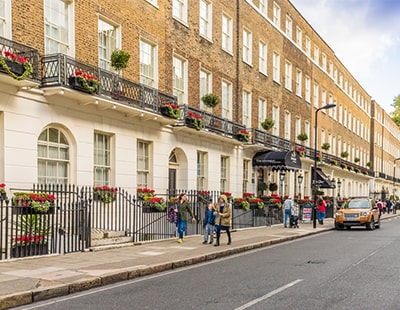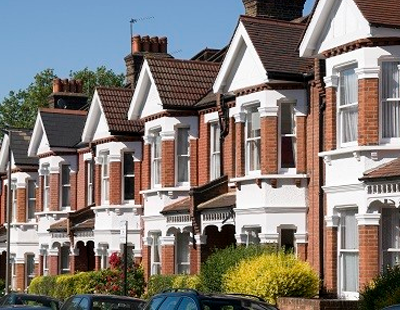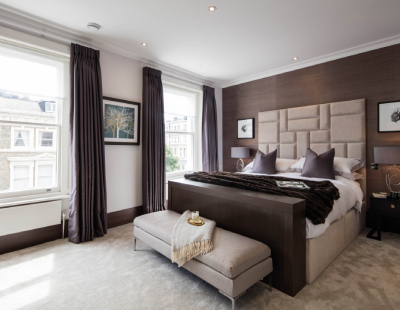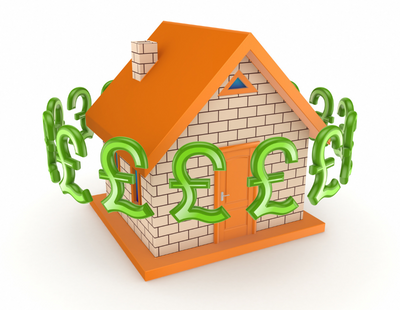Earlier this year, billionaire US hedge fund manager Ken Griffin purchased 3 Carlton Gardens for £95 million.
The Grade II listed Georgian building sits within sight of Buckingham Palace on the Mall and is thought to be the most expensive property purchase in the UK since 2011.
However, with a £30 million discount from the advertised price of £125 million, the 152th richest person in the world picked up a good deal on the house which was bought off-market.
The prime market overview
The best performing postcode in the prime market is SO15 in Upper Shirley, Southampton, where the average sold price is £7,265,000. This is closely followed by GU19 in Bagshot, Surrey, with an average sold price of £5,000,000.
WC2E in Covent Garden is home to the third-highest sold price at £4,967,000, and TQ9 in Stoke Gabriel, Devon is close behind at £4,500,000. WC2N, neighbouring WC2E, takes fifth spot with an average of £4,500,000.
Prime property transactions have been building over the last year, with a 9% increase in sales between £1 million and £2 million, a 5% uplift between £2 million and £5 million and a 7% jump above £5 million.
In terms of the best-performing postcodes so far this year, Battersea’s SW11 has seen the most market activity with 104 sales between £1 million and £10 million and an average sold price of £1,474,782.
Meanwhile, SE1 in Southwark covering the Southbank has seen 103 transactions with an average sold price of £2,995,057. SW6 in Fulham ranks third with 94 transactions and an average sold price of £1,687,657.
NW3 in Hampstead (£2,228,573) and SW19 in Wimbledon (£1,835,958) complete the top 10 postcodes for most transactions in the prime market.
The super-prime market overview
Vyomm’s research found market conditions in the super-prime bracket remain more muted compared to the lower levels of the top end market, with NW8 in St John’s Wood home to the highest average sold price at £26,000,000.
W1J in Mayfair (£24,328,158), W14 in Holland Park (£22,690,000) and E6 in East Ham (£20,774,520) are also home to an average sold price above £20,000,000. W9 in Maida Vale completes the top five prime postcodes with the highest average sold prices so far in 2019.
Mayfair’s W1J is also home to the largest number of transactions so far this year with three sales, joined by W8 in Kensington.
NW8 not only tops the table for sold prices but ranks third for transactions with two sales, along with W14 in Holland Park and W11 in Notting Hill.
The only other areas outside of London to see any market activity so far in 2019 are NG20 in Mansfield, Derbyshire and KT13 in Weybridge, Surrey, with average sold prices of £15,696,793 and £11,500,000 respectively.
“While the super-prime market remains one driven by quality rather than quantity, there has been a number of notable transactions so far this year which suggests the tide is starting to turn and buyer demand is returning to the very top level of the market – particularly in London,” Utsav Goenka, founder of Vyomm, commented.
“In addition to this, we are certainly seeing a return to form in the lower levels of the prime property market, with double-digit transaction levels being registered in over 100 postcode areas between the £1m and £10m threshold.”
He said that although the ongoing uncertainty surrounding Brexit may be ‘dampening regular buyer appetite’, there are many foreign buyers who recognise that now is the time to secure a very good deal before prices see further growth.
This realisation has been steered by a weaker pound, coupled with the potential reversal of the previous stamp duty charges that pushed up costs and deterred people from buying.
With the original changes to stamp duty tax having a far greater impact than Brexit has had to date, a return to previous thresholds may ‘bring a notable increase in demand and price growth in the prime and super-prime markets especially’.
Goenka concluded: “Yes, we are yet to see a return to previous form, but this return is certainly now within arm’s reach and with heightened levels of buyer demand, it’s a matter of when not if.”










.png)









Join the conversation
Be the first to comment (please use the comment box below)
Please login to comment